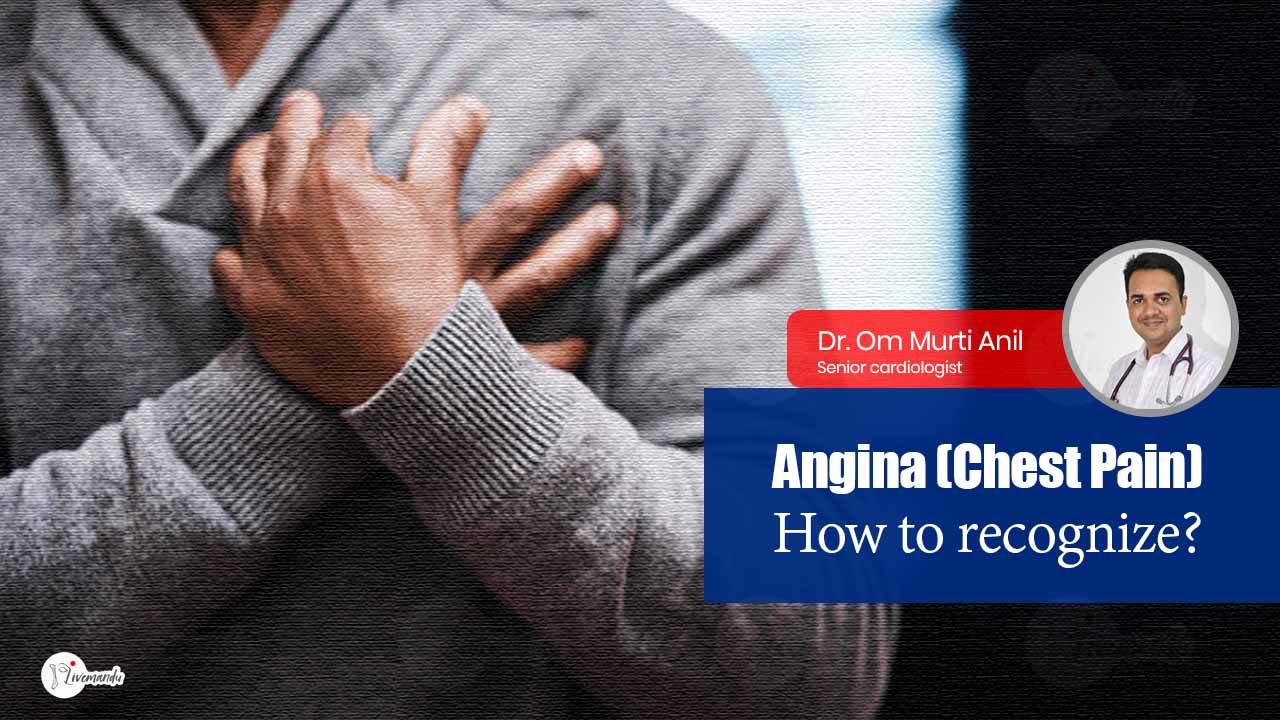
Angina (Chest Pain) – How to recognize?
Chest Pain due to heart reason is angina
Dr. Om Murti Anil, Senior cardiologist, Kathmandu, Nepal | Angina is chest pain or discomfort caused when your heart muscle doesn’t get enough oxygen-rich blood. It may feel like pressure or squeezing in your chest. The discomfort also can occur in your shoulders, arms, neck, jaw, or back. Angina pain may even feel like indigestion.
But, angina is not a disease. It is a symptom of an underlying heart problem, usually coronary heart disease (CHD). There are many types of angina, including microvascular angina, Prinzmetal’s angina, stable angina, unstable angina, and variant angina.

Senior cardiologist
This usually happens because one or more of the coronary arteries is narrowed or blocked, also called ischemia.
Angina can also be a symptom of coronary microvascular disease (MVD).
This is heart disease that affects the heart’s smallest coronary arteries and is more likely to affect women than men. Coronary MVD also is called cardiac syndrome X and non-obstructive CHD.
Depending on the type of angina you have, there are many factors that can trigger angina pain. The symptoms also vary based on the type of angina you have.
Types of Angina
Knowing the types of angina and how they differ is important.
- Stable Angina / Angina Pectoris
- Unstable Angina
- Variant (Prinzmetal) Angina
- Microvascular Angina
Understand Your Risk for Angina
If you’re at risk for heart disease or coronary MVD, you’re also at risk for angina. The major risk factors for heart disease and coronary MVD include:
- Unhealthy cholesterol levels
- High blood pressure
- Smoking
- Diabetes
- Overweight or obesity
- Metabolic syndrome
- Inactivity
- Unhealthy diet
- Older age (The risk increases for men after 45 years of age and for women after 55 years of age.)
- Family history of early heart disease
- Diagnosis of Angina
All chest pain should be checked out by a healthcare provider. If you have chest pain, your doctor will want to find out whether it’s angina, and if it is, whether the angina is stable or unstable. If it’s unstable, you may need emergency medical treatment to try to prevent a heart attack.
Your doctor will most likely perform a physical exam, ask about your symptoms, and ask about your risk factors for and your family history of heart disease and other cardiovascular conditions.
Talk to Your Doctor
Your doctor will probably ask you a series of questions to rule out the most critical or life-threatening possibilities. Think ahead so you can provide as much information as possible. Here are some questions you might be asked:
How long have you had this condition?
On a scale of 1 (mild) to 10 (critical), what is your level of discomfort?
What behavior(s) provoke the pain? Physical activity? Eating?
What relieves the discomfort?


